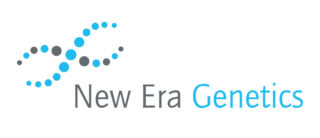Watch our Webinar:
“Broader adoption of NIPT: Implications for Health Systems”
In August 2020, ACOG/SMFM issued guidelines recommending cfDNA (NIPT) be offered to all patients regardless of maternal age or baseline risk. Watch our webinar to learn more.

Recent ACOG guidelines support NIPT for all pregnancies1
- Recommends NIPT as an option to be “discussed and offered to all patients early in pregnancy, regardless of maternal age or baseline risk.”
- Endorses cfDNA as the “most sensitive and specific screening test for the common fetal aneuploidies.”
- Highlights unique advantages of SNP-based NIPT, including triploidy detection and unique twins capabilities such as zygosity detection and individual fetal fraction measurements.
Panorama is highly aligned with ACOG Practice Bulletin 226
Highlights of the AOCG Guide include the unique capabilities of SNP-based NIPT
ACOG PRACTICE BULLETIN 226 HIGHLIGHTS26
PanoramaTM SNP-based NIPT1-4,7-12
Counting-based NIPT methods14,15,18-20,23-25
PanoramaTM's areas of unique clinical value
“Cell-free DNA [NIPT] can be performed in twin pregnancies“


“…one laboratory method which uses SNP analysis reports zygosity as well as individual fetal fractions.“


“[In twin gestations,] it is possible that an aneuploid fetus would contribute less fetal DNA, therefore masking the aneuploid result.”


Twins
differentiation
Highlights known sources of false positives for most NIPTs:
- Vanishing twin, - Maternal mosaicism
“Of the [NIPT] methods, the [SNP-based] method can identify triploidy.”


Every
result
matters
“…the lower prevalence of fetal trisomies in younger patients results in…a lower PPV…”
PPVs published
PPVs available
Accuracy and
reliability
Proven performance in average risk pregnancies
Strong clinical evidence with robust PPVs regardless of age, based on a large outcomes study with >700,000 patients under <35.
Panorama clinical outcomes in a study of over 1 million patients:

Contact us!
Is PanoramaTM right for you?
We're here to help you find out!
Refrences:
1Dar et al. Am J Obstet Gynecol. Epub prior to publication. https://doi.org/10.1016/j.ajog.2022.01.002
2DDar et al.Am J Obstet Gynecol. Epub prior to publication. https://doi.org/10.1016/j.ajog.2022.01.019
3Norton et al. Perinatal and genetic outcomes associated with no call cfDNA results in 18,497 pregnancies. Society of Maternal-Fetal Medicine, SMFM. Virtual Meeting. Oral Presentation. Jan 25-30, 2021.
4Nicolaides et al. Fetal Diagn Ther. 2014;35(3):212-7.
5Pergament et al. Obstet Gynecol. 2014 Aug; 124(2 Pt 1):210-8.
6Nicolaides et al. Prenat Diagn. 2013 June; 33(6):575-9.
7Ryan et al. Fetal Diagn Ther. 2016;40(3):219-223.
8ACOG Practice Bulletin 226. Obstet Gynecol. 2020 Oct;136(4):859-867.
9Natera internal data on file.
10Norwitz et al. J Clin Med. 2019 Jun; 8:937.
11Martin KA et al. Am J Obstet Gynecol MFM. 2020;2:100152.
12Palomaki GE, et al. Prenat Diagn. 2020 Oct 5. doi: 10.1002/pd.5832. [Epub ahead of print].
13Hedriana H et al. Prenat Diagn. 2020 Jan;40(2):179-184.
14Society for Maternal-Fetal Medicine, Clinical guideline: Twin-twin transfusion syndrome, Jan 2013.
15American College of Obstetricians and Gynecologists and Society for Maternal-Fetal Medicine, practice bulletin #169, Oct 2016.
16Oldenburg et al. Ultrasound Obstet Gynecol. 2012 Jan;39(1); 39: 69–74.
17Chasen, Chervenak (2017). Twin pregnancy: Prenatal issues. In T. Post (Ed.), UpToDate. Waltham, Mass.: UpToDate. Retrieved from www.uptodate.com
18Cunningham et al. Williams Obstetrics. 24th edition. New York: McGraw-Hill Education, 2014.

